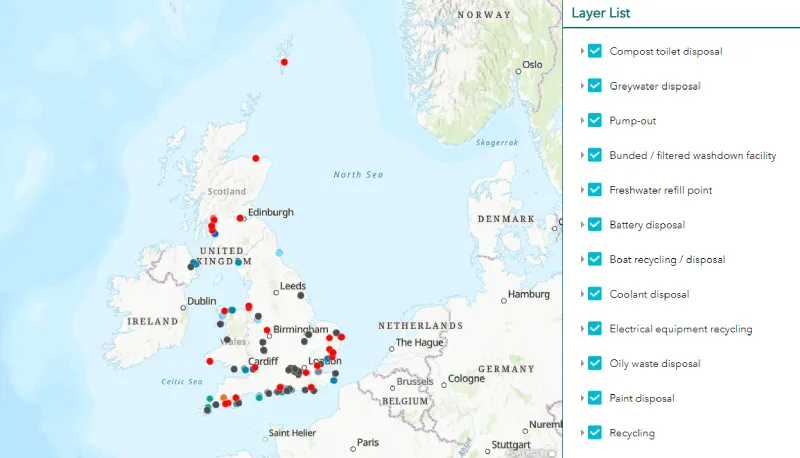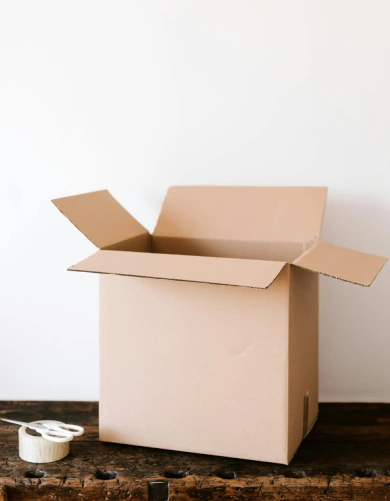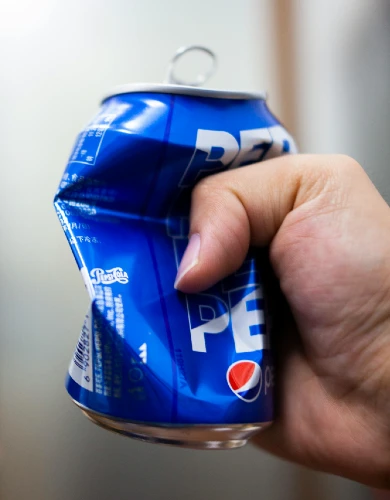Boat and ship waste
Can I release my boat’s sewage into the Ocean? Can I toss my dinner leftovers from my canal boat kitchenette into the canal? Can I avoid segregating the waste generated on my passenger cruise?
Surprisingly, the answer isn’t always no.
This article covers all the shades of waste generated in any vessel and what you need to do with them to comply with the rules.
💡 Key takeaways:
- In rivers, lakes, and canals: You must take all your waste onshore, nearest your docking/mooring location.
- In the sea: It’s a bit more flexible. Sewage and food waste are okay to dispose of as long as they are far enough from land and away from any sensitive areas—the deep sea is a vast place!
- Regulations: You’d be surprised by the amount of regulations. Inland, it’s organisations like the EA and SEPA rule. Offshore, the IMO’s MARISOL convention and its various annexes were brought into British law.
What is boat waste and ship waste?
Despite sounding similar, ‘boat waste’ and ‘ship waste’ differ slightly. While both are generated by vessels at sea or in inland waterways, the regulations that apply to them and the types and quantities of waste typically differ significantly:
Boat waste
Boat waste is generated on smaller boats, yachts, and fishing vessels. It includes food waste, plastic and glass bottles, fishing gear, and engine oil. Boat waste is often managed by the individuals or crews on board and is subject to regulations regarding disposal at sea and port facilities.
Ship waste
Ship waste is generated on larger vessels such as cargo ships, cruise ships, and naval vessels. It includes a wider range of materials, like industrial waste, sewage, hazardous materials, and large quantities of food waste. The management and disposal of ship waste are subject to strict international and national regulations to prevent marine pollution.
💡 Marine Waste: If the ship or boat waste is deliberately or accidentally introduced into the marine environment, including oceans, seas, coastal areas, and waterways leading to the sea, it becomes marine waste, posing a significant threat to marine life, ecosystems, and human health.
Typical waste from boats and ships
Marine vessels of different sizes serve a variety of functions. There are passenger ships to cross the channel, large fishing fleets, leisure boats, oil tankers, and container ships, to name a few.
While each generates a distinct waste stream, they all have the same common types of waste in different proportions:
Sewage waste
Sewage waste will be present on any vessel with a toilet, with volumes generated proportional to the number of crew and passengers. How sewage is dealt with depends on the circumstances (e.g., the distance to the nearest shore, which the water belongs to, and whether the sewage is treated or not).
In UK waters, discharging untreated sewage is prohibited within 3 nautical miles of the nearest land, where harmful pathogens and sewage nutrients can easily dissipate. Treated sewage may be discharged if visible floating solids don’t cause the surrounding water to discolour, except in no-discharge zones protecting sensitive marine environments and recreational areas.
Sewage waste disposal is outright prohibited in UK inland waterways and canals. In this case, pump-out facilities should be used for disposal in all circumstances.
General waste and recyclables
No general or recyclable waste should ever be disposed of in the sea or inland waterways. This waste should be collected in sealed bins and disposed of onshore. Ideally, the waste should be segregated in the vessel into as many recyclable categories as possible to guarantee you meet the required criteria onshore, which depends on what is available at the port or docks (e.g. some will require separating between recyclables, while others accept dry mixed recycling).
This includes waste segregation for:
- Plastic recycling (incl. polystyrene recycling)
- Cardboard recycling
- Glass recycling
- Metal recycling
- Electronics recycling
- Hazardous waste
💡 Poole Harbour: Poole Harbour in Dorset is Europe’s largest natural harbour and a wildlife haven at the same time. They achieved this by designating it a Site of Special Scientific Interest (SSSI) and a Special Protection Area (SPA), forcing extra waste regulations on the vessels arriving at the port.
Food waste
While commercial food waste is typically considered in the same group as general waste and recyclables, it has its own rules regarding disposal at sea because its environmental footprint is considered negligible in certain circumstances, given its biodegradability. This depends on the area’s designation, the distance from the nearest land, and any processing that the waste has received:
| Area designation | Is food disposal in water allowed? | Disposal rules |
|---|---|---|
| Inland waterways or canals | No | Discharge of any food waste is prohibited regardless of location. Food waste must be disposed of using reception facilities in docking/mooring areas. |
| Sea -- In General | Yes | Discharge of any food waste is permitted outside the 12 mile nautical limit from the nearest land. Comminuted (ground to under 25mm) food waste can be disposed of at sea outside a 3 mile nautical limit. |
| Sea -- MARPOL Special Areas | Yes | Discharge of comminuted (ground) food waste is permitted outside the 12 mile nautical limit from the nearest land. Non-communited food cannot be disposed in these special areas. |
| Sea -- No Discharge Zones (NDZs) and In Port | No | Discharge of any food waste is prohibited regardless of location within NDZs or ports. Food waste must be disposed onshore using port reception facilities. |
| Sea -- Exceptional Circumstances | Yes | Discharge may be allowed if retention on board presents a safety hazard or if capacity is exceeded, to be documented in the Garbage Record Book. |
💡 MARPOL Special Areas: All UK waters of the North Sea east of longitude 4°W to the entrance of the Baltic Sea are internationally considered a ‘Special Area’ with stricter ship and boat waste regulations. This is due to the need for greater protection due to their environmental sensitivity and risk exposure from maritime activities. See here for a list of all MARPOL Special Areas.
Ballast and bilge water
The bilge is the lowest compartment on a ship or boat. It is designed to collect excess water that may enter the vessel from various sources, such as leaks, waves, or condensation. The bilge water can also accumulate oil, fuel, and other contaminants, making it potentially hazardous waste.
Ballasts are present in larger ships and are used to stabilise them. The main issue with ballast water is that it may contain invasive species, so it should be treated before its release.
The release of these polluted waters is necessary for a boat or ship’s operations, so strict rules bind it, summarised in the following tables:
| Water type | Key Requirements and Conditions | Documentation Required | |
|---|---|---|---|
| Ballast water | - Must treat ballast water using an approved system before discharge. - Exchange must occur 200 nautical miles from land and in water at least 200 meters deep, or: - 50 nautical miles from land and 200 meters deep if the former is not possible. | - Ballast Water Management Plan - Ballast Water Record Book - International BWM Certificate | |
| Bilge water | - Discharge allowed only if oil content < 15 ppm. - Ship must be on route and typically more than 12 nautical miles from the nearest land. - Use of oil-water separator, oil content meter, and alarm system is required. | - Oil Record | |
💡 Invasive Species: Ballast water is one of the leading sources of invasive species in marine environments. Organisms transported in ballast water, such as the zebra mussel and the comb jelly, have been known to disrupt local ecosystems dramatically.
Boat and ship waste regulations
Special international and UK regulations govern the waste management of boats and ships. Here is a summary of each regulation, who it applies to, and where it applies.
| Regulation | Who it Applies To | Where it Applies |
|---|---|---|
| MARPOL | Ships and boats | International waters |
| Merchant Shipping Regulations 2008 | Ships and boats | UK waters |
| Merchant Shipping and Fishing Vessels Regulations 2003 | Ports, harbors, ships, and fishing vessels | UK ports and harbours |
| Environment Agency Regulations | Boats on inland waterways in England | Inland waterways managed by the EA |
| Canal & River Trust Regulations | Boats on canals and rivers in England and Wales | Waterways managed by the C&R Trust |
| Scottish Canals Regulations | Boats on Scottish canals and waterways | Waterways managed by Scottish Canals |
| Northern Ireland Environment Agency Regulations | Boats on inland waterways in NI | Inland waterways managed by the NIEA |
| Local Marina Regulations | Boats moored or serviced in marinas | Marinas, harbors, and boatyards |
Here are the details of each of these regulations:
MARPOL: The International Convention for the Prevention of Pollution from Ships (MARPOL) is an international convention organised by the IMO and signed by 156 countries, including the UK. It encompasses over 99% of shipping tonnage. The rules laid out by MARPOL apply to all ships flagged under signatory countries and include rules to manage refuse waste, oil, noxious, harmful, and sewage wastes.
The Merchant Shipping Regulations 2008: UK regulations that implement MARPOL into UK law, specifically annex IV (Sewage) and V (Garbage). These regulations apply to all ships, including boats, operating in UK waters and to UK ships operating in international waters.
The Merchant Shipping and Fishing Vessels Regulations 2003: These are UK regulations that implement MARPOL into UK law, specifically those annexes that ensure that ports and harbours provide adequate facilities for the reception of waste from ships and fishing vessels. While more focused on ports, harbours, and terminals, these regulations also apply to ship operators, who must use the facilities provided for waste disposal.
EA (England), NRW (Wales), Scottish Canals (Scotland), NIEA (Northern Ireland) Regulations: These rules focus on the disposal of sewage and garbage from boats and apply to all boats operating on inland waterways in each national regulator, including private boats, commercial vessels, and hire boats.
Canal & River Trust Regulations: These regulations apply to boats moored or navigating on the 2,000 miles of canals managed by the Canal & River Trust (a charity), which includes many of the canals and rivers in England and Wales. They set out requirements for waste disposal from boats, focusing on sewage management (i.e., mandatory use of pump-out facilities).
Local Marina regulations: Local Marina regulations apply to boats moored or serviced in marinas, harbours, and boatyards. These typically cover waste management and disposal practices, including rules for sewage, oil, and garbage disposal and requirements for using environmentally friendly products.
💡 Did you know? The Canal & River Trust’s ‘Green Flag Award Scheme‘ has successfully promoted environmentally friendly boating practices in its canals, including proper waste disposal. 600 of 2,000 miles have been awarded the prestigious Green Flag, a testament to high environmental quality.
Compliance with waste regulations for boat and ship
Now that we’ve covered the rules overseeing the waste management of vessels, here’s the most pertinent part: how to actually comply with them! Here are two scenarios and what a small crew would need to do to comply with all regulations:
A canal boat cruising canals across the UK
This has become typical for British retirees, people on gap years, and even remote workers. Here’s what they would need to do for each waste type:
| Waste Type | How to comply with waste regulations |
|---|---|
| Sewage | The boat must have a sewage holding tank, and the contents should be emptied regularly at designated pump-out facilities. Discharging untreated sewage directly into the waterways is prohibited. |
| General waste and recyclables | All general and recyclable waste generated on the boat should be collected and disposed of responsibly at designated disposal points along the waterways. Recyclable materials should be separated and disposed of in the appropiate recycling containers (which vary per council!) |
| Hazardous Waste | Hazardous materials, including batteries, oil, and paint, must be disposed of at designated facilities. Boat owners should follow specific disposal guidelines for each type of hazardous waste. |
| Oil and fuel | The boat's engine and fuel system should be maintained to prevent leaks. In the event of a spill, absorbent pads or booms should be used to contain the spill, which should then be disposed of at a designated hazardous waste facility. |
| Chemicals | The use of harmful chemical products should be minimised, with environmentally friendly alternatives like biodegradable products or water-based paints preferred. Any chemicals used should be disposed of according to manufacturer's instructions and local regulations. |
An inshore fishing boat
These smaller vessels, typically under 10 meters long, operate in shallow water close to the shore. They’re often family-owned or operated by small-scale fishermen and dock in small harbours or villages along the coast. A textbook example is the fishing boats of Padstow Harbour in Cornwall.
| Waste Type | How to comply |
|---|---|
| Sewage | Boats with onboard toilets should use holding tanks and empty them at pump-out facilities in port. Boats without onboard facilities should use onshore toilets when in port. |
| Refuse and recyclables | Waste generated onboard should be collected and stored in appropriate containers, efforts should be made to minimise single-use plastics, and garbage should be disposed of at designated bins or recycling facilities in port. |
| Fishing gear | Damaged or old fishing gear should not be discarded at sea but brought back to port for disposal or recycling. Participation in gear recycling programs is encouraged where available. |
| Oil and fuel | Oil and fuel should be handled carefully to prevent spills, used oil, filters, and oily rags should be disposed of at hazardous waste facilities in port, and absorbent materials should be used for spill cleanup and disposed of as hazardous waste. |
| Chemicals | The use of harmful chemical products for boat maintenance or cleaning should be minimised, with eco-friendly alternatives used whenever possible. Chemicals used onboard should be stored securely and disposed of according to regulations. |
| Fish Waste | Fish waste should be used for bait or processed into fishmeal where possible, and disposal at sea should be done in accordance with regulations to avoid pollution and attracting scavengers. |
Environmental facilities map
Here’s a useful map of waste management infrastructure for boats:

Boat waste infrastructure is most concentrated around the canal network in Oxford, Liverpool, Norwich and Birmingham.
Doing the right thing
Even though the Maritime and Coastguard Agency (MCA) is trying its best to enforce compliance with waste regulations in British waters, it is far too vast of a territory to constantly monitor. It is up to the vessels’ crews to take care of their waste and any potential spills into the sea, despite sometimes seeming like the Ocean is a vast place and that a little plastic wrapper being blown by the wind is inconsequential.
But every little bit adds to the problem. Besides the usual undocumented oil or chemical spill, we now have plastic islands the size of London floating in the middle of the Ocean, an aggregation of seemingly innocent littering. All businesses (including those onshore) must realise that doing something as simple as fulfilling its waste duty of care (remember, most businesses actually don’t!) already takes care of half the problem.
So, whatever sector you’re in, whether onshore or offshore, start by arranging for the appropriate commercial waste collection for whatever your local council requires. There will be no way back once you grasp how the circular economy can reduce issues like marine waste while reducing costs for everyone.

